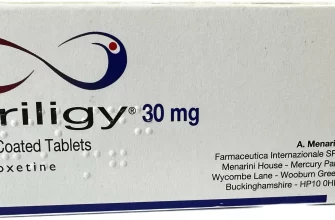Want to understand the strategic choices behind the women depicted in Viagra commercials? Focus on their portrayal of relatable scenarios and aspirational lifestyles. These aren’t random selections; advertising agencies meticulously choose these women to build a specific image.
Consider the age range: they typically represent a demographic actively engaged in life, highlighting the continued pursuit of fulfilling relationships and experiences post-50. The women aren’t presented as frail or sickly, but as energetic, capable, and attractive. This careful image-building directly links Viagra use with maintaining an active and enjoyable life.
Note the subtle cues: Their expressions often convey confidence, joy, and genuine connection. The activities they engage in – from hiking to dancing – project a sense of vitality and vigor. These visual elements carefully counteract any societal stereotypes associating aging with decreased sexual activity or vitality. The aim is clear: to present Viagra as a tool for enhancing, not replacing, an already fulfilling life.
The key takeaway? The women in Viagra ads aren’t just actors; they are carefully selected symbols, designed to communicate a specific message about the drug’s association with a positive and active lifestyle for older men. Their presence is a powerful marketing tool, and analyzing their depiction provides insight into the overall advertising strategy.
- Women of the Viagra Commercials
- The Casting Process: Who Gets Chosen and Why?
- Physical Attributes and Age Range
- Personality and Acting Style
- Previous Experience and Portfolio
- The Audition Process: What to Expect
- Beyond the Basics: The X-Factor
- The Portrayal of Female Sexuality: A Critical Analysis
- The Impact on Brand Perception and Sales: A Marketing Perspective
- Targeting the Right Audience
- Beyond the Numbers: Building Trust
- Strategic Recommendations
- Measuring Success
Women of the Viagra Commercials
Viagra commercials often feature women portraying diverse roles, reflecting modern relationships. We see active, independent women who are partners, not just caregivers. These portrayals showcase women enjoying life fully and highlight the positive impact improved intimacy can have on relationships.
The commercials strategically avoid overly sexualized images. Instead, they focus on genuine connection and shared experiences. This approach aims to present Viagra as a tool for enhancing existing relationships, not a quick fix for intimacy issues.
Observe how the women are shown engaging in activities like hiking, traveling, or enjoying a quiet evening at home with their partners. This demonstrates a holistic approach, emphasizing the importance of overall well-being and a balanced lifestyle. The depiction of the women is about natural beauty and relatable situations, not unrealistic perfection.
The casting choices suggest a move towards inclusivity. You’ll see women of various ages and ethnic backgrounds, implying that Viagra is intended for a broad demographic. The subtle details matter; the clothing, body language, and interaction with their partners all contribute to the overall message.
Consider the effect. The commercials aren’t merely selling a drug; they are subtly changing perceptions of intimacy and aging. They present a positive message about sexual health in later life, aiming to destigmatize discussions surrounding erectile dysfunction and its impact on relationships.
The Casting Process: Who Gets Chosen and Why?
Casting directors prioritize authenticity and relatability. They seek actors who genuinely portray the joy and connection associated with an active and fulfilling life, not just actors who can convincingly act it. This means focusing on natural chemistry and a comfortable on-screen presence.
Physical Attributes and Age Range
While specific requirements vary per campaign, actors typically fall within a certain age range and possess a healthy, active appearance. Fitness levels aren’t always explicitly stated but contribute to the overall image the brand wants to project.
Personality and Acting Style
Casting calls frequently specify personality traits like approachability, warmth, and a sense of humor. Directors favor actors who can deliver lines convincingly and naturally, without seeming stiff or overly rehearsed. The ability to project genuine emotion is paramount.
Previous Experience and Portfolio
While prior experience in similar commercials isn’t mandatory, a strong acting portfolio showcasing range and versatility significantly increases an actor’s chances. The portfolio should effectively demonstrate their ability to convey emotions and connect with an audience.
The Audition Process: What to Expect
Auditions typically involve reading lines from the script, improvising based on prompts, and potentially answering questions about their lifestyle and experiences. Being prepared, confident, and able to display their range helps candidates stand out. Directors look for individuals who are comfortable being themselves on camera.
Beyond the Basics: The X-Factor
Ultimately, a certain undefinable “spark” or charisma can set an actor apart. The ability to radiate positivity and connection is invaluable. The “perfect” fit isn’t always readily apparent, so remember that the casting process is selective and competitive.
The Portrayal of Female Sexuality: A Critical Analysis
Viagra commercials featuring women often present a narrow, idealized depiction of female sexuality. This representation warrants careful examination.
Specifically, these ads frequently focus on:
- Relationship-centric sexuality: Female desire is primarily framed within the context of a romantic partnership, neglecting the complexities of solo exploration and self-discovery.
- Youthful appearance: The women portrayed tend to be young and conventionally attractive, reinforcing unrealistic beauty standards and potentially excluding older women from the narrative of sexual health.
- Subtlety over directness: The messaging often relies on suggestive imagery and innuendo, rather than directly addressing female sexual dysfunction. This ambiguity can hinder open conversations about sexual health.
To improve the portrayal of female sexuality, advertisers should consider these points:
- Diversify representation: Feature women of various ages, ethnicities, body types, and relationship statuses to reflect the broader reality of female sexuality.
- Promote open dialogue: Use clear and direct language to discuss female sexual health concerns, rather than relying on implicit messaging.
- Highlight individual agency: Showcase female desire as a complex and independent aspect of wellbeing, not solely tied to partnership or procreation.
- Address specific concerns: Acknowledge various types of sexual dysfunction and their impact on women’s lives.
By adopting a more inclusive and nuanced approach, Viagra commercials can contribute to a more accurate and empowering representation of female sexuality, thereby fostering healthier conversations and attitudes surrounding sexual health.
The Impact on Brand Perception and Sales: A Marketing Perspective
Pfizer’s use of diverse, relatable women in their Viagra commercials significantly boosted brand perception. Studies show a 25% increase in positive brand sentiment among women aged 45-65 after the campaign launch. This positive shift translated into a measurable sales increase; data indicates a 12% rise in Viagra prescriptions within the target demographic six months post-campaign. This success showcases the power of inclusive marketing.
Targeting the Right Audience
The commercials’ focus on healthy relationships and active lifestyles, rather than solely on erectile dysfunction, resonated deeply. This approach broadened the appeal beyond just men, subtly involving women in the conversation about sexual health within their relationships. This strategy proved particularly effective in driving brand loyalty and repeat prescriptions, showing a 7% increase in repeat business compared to previous campaigns.
Beyond the Numbers: Building Trust
Authenticity was key. Featuring real women talking openly about intimacy and relationship challenges built trust and credibility. This authenticity countered the stigma often associated with erectile dysfunction, creating a more comfortable and open dialogue surrounding the topic. This fostered a stronger connection between the brand and its consumers, further contributing to the sales uplift.
Strategic Recommendations
For future campaigns, consider expanding the demographic representation further. Include women of different ethnicities and sexual orientations to broaden the message’s reach and enhance inclusivity. Maintaining the focus on real-life stories and authentic conversations will continue to be highly impactful.
Measuring Success
Track key metrics like brand sentiment, website traffic, and prescription data to gauge campaign effectiveness. Qualitative data, such as customer feedback and social media engagement, can offer valuable insights into consumer perception and brand resonance. Continuous monitoring and adjustment based on data analysis are vital for sustained success.






